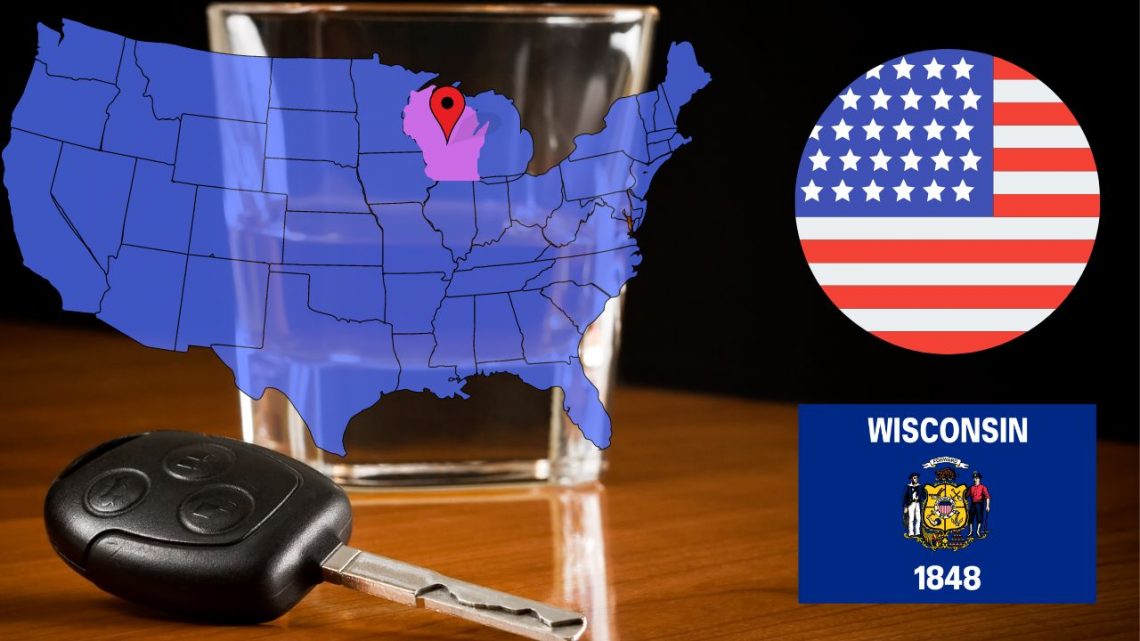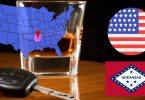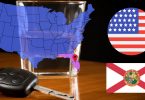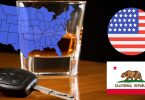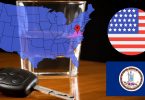In Wisconsin, the maximum permissible blood alcohol concentration (BAC) stands at 0.08% or 80 mg of alcohol per 100 mL of blood.
This post’s sole goal is to raise awareness regarding impaired driving in Wisconsin. We do not advise or encourage drunk driving in any state or region.
What is the legal alcohol limit for driving in Wisconsin?
In Wisconsin, the legal alcohol limits for driving vary depending on the driver’s license type and age. These limits are set to ensure road safety and reduce the risks associated with driving under the influence of alcohol. Here’s a breakdown of the legal blood alcohol concentration (BAC) limits for different categories of drivers:
- Regular Drivers: The legal BAC limit is 0.08%. This applies to most drivers operating personal vehicles.
- Commercial Drivers: For those holding a commercial driver’s license, the legal BAC limit is reduced to 0.04%, reflecting the higher standards for professional drivers.
- Minors (Under 21): Wisconsin enforces a zero-tolerance policy for underage drinking and driving. It is illegal for minors to drive with any detectable amount of alcohol in their system.
Drink and Drive Penalties and Punishments in Wisconsin
In Wisconsin, the consequences for driving under the influence of alcohol or drugs are severe and vary depending on the offense number and specific circumstances of the case. As of October 1, 2020, penalties include fines, confinement, mandatory sentence enhancements, and driving consequences, which can have significant implications on one’s driving privileges and overall freedom. It’s crucial for drivers to stay informed about these laws to avoid the harsh penalties associated with OWI (Operating While Intoxicated) offenses. Below is a summary of the penalties for various OWI offenses. For the most current information, always check the official state website.
OWI, First Offense:
- Fine: $150-$300 plus $435 OWI surcharge.
- No confinement.
- Revocation: 6-9 months.
- If BAC is 0.15 or more, an Ignition Interlock Device (IID) or 24/7 sobriety program is required for 1 year.
OWI, Second Offense (No prior OWI within 10 years):
- Fine: $150-$300 plus $435 OWI surcharge.
- No confinement.
- Revocation: 6-9 months.
- IID or 24/7 sobriety program required for 1 year.
OWI, Second Offense (Prior OWI within 10 years):
- Fine: $350-$1,100 plus $435 OWI surcharge.
- Confinement: 5 days to 6 months.
- Revocation: 12-18 months plus confinement length.
- IID or 24/7 sobriety program required for 1 to 18 months plus confinement length.
OWI, Third Offense:
- Fine: $600-$2,000 plus $435 OWI surcharge.
- Confinement: 45 days to 1 year.
- Revocation: 2-3 years plus confinement length.
- IID or 24/7 sobriety program required for 1 to 3 years plus confinement length.
OWI, Fourth Offense:
- Fine: $600-$10,000 plus $435 OWI surcharge.
- Class H Felony.
- Confinement: 60 days to 6 years.
- Revocation: 2-3 years plus confinement length.
- IID or 24/7 sobriety program required for 1 to 3 years plus confinement length.
Subsequent Offenses: The penalties increase significantly for fifth or subsequent offenses, including higher fines, longer confinement times, and extended periods for revocation and IID requirements.
Special Considerations:
- Consequences for Minors: If a minor under 16 is in the vehicle, penalties can be more severe.
- Out-of-State Offenses: Consequences for Wisconsin drivers committing offenses in other jurisdictions.
- Occupational License: Under certain conditions, individuals may apply for an occupational license immediately, although specific restrictions, including a lower BAC limit for IID, may apply.
Additional Penalties:
- Causing Injury While OWI: Includes additional fines, confinement, and revocation periods, especially if the driver has a prior OWI offense or refused a chemical test.
- Homicide While OWI: Involves severe penalties, including up to $100,000 fines and up to 25 years in confinement, with longer periods for drivers with prior OWI-related offenses.
Given the complexity and severity of OWI penalties in Wisconsin, it’s essential for drivers to understand these laws and their implications fully. Remember, the specifics can change, so it’s advisable to frequently check the official state’s website for the most up-to-date information on OWI and related alcohol and drug offense penalties.
Calculating Your Legal Alcohol Blood Limit in Wisconsin
In Wisconsin, law enforcement officials determine if a driver is over the legal alcohol limit primarily through the use of breathalyzer tests and blood tests. These methods are considered the most direct and accurate means to measure blood alcohol concentration (BAC). When a driver is suspected of operating a vehicle while intoxicated (OWI), police may administer a field sobriety test followed by a breathalyzer test. If further verification is needed, or if the breathalyzer test is refused, a blood test may be conducted to accurately measure the BAC level.
As an experienced phlebologist with a decade of expertise, I recommend two alternative ways to estimate your BAC level and ensure it’s within Wisconsin’s legal limits:
- Use a High-Quality Alcohol Breathalyzer: The most reliable breathalyzer I recommend is the BACtrack S80. This device is known for its professional-grade accuracy and is both DOT & NHTSA approved and FDA 510(k) cleared. Keeping a BACtrack S80 in your vehicle can be a wise decision, especially in Wisconsin where it’s common to underestimate one’s BAC level. This tool can help you make informed decisions about your ability to drive safely.
- Utilize a BAC Calculator: Alongside other phlebologists and web developers, I’ve developed an online BAC calculator designed to estimate your alcohol level based on various inputs such as your weight, the type and amount of alcohol consumed, and the time elapsed since drinking. This tool can be found online and serves as a helpful resource for gauging your BAC.
It’s crucial to remember that while both methods offer valuable insights, they cannot guarantee 100% accuracy in determining your BAC level. Factors such as metabolism, medication, and health conditions can affect BAC and its impact on your impairment level. However, these tools can provide a good indication of whether you’re approaching or exceeding the 0.08% limit, potentially preventing you from driving while impaired.
Always err on the side of caution when deciding whether to drive after consuming alcohol. The best policy is not to drive if you’ve been drinking, ensuring your safety and that of others on the road.
Ways to Avoid Driving with a High BAC in Wisconsin
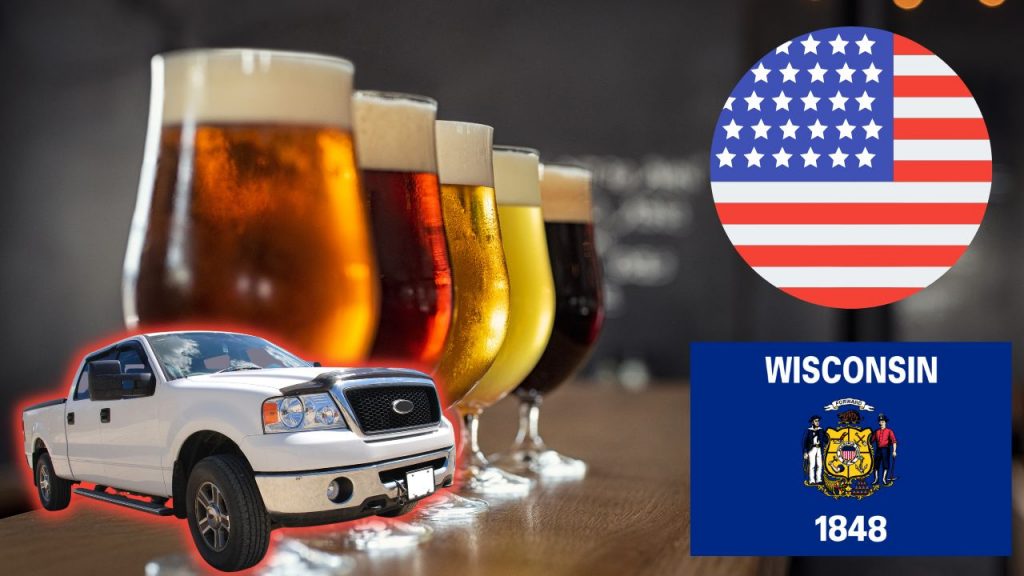
Driving with a high blood alcohol concentration (BAC) not only endangers your life but also the lives of others on the road. Wisconsin has strict laws regarding driving under the influence, and the penalties can be severe. Fortunately, there are several practical ways to avoid getting behind the wheel if you’ve been drinking:
- Utilize Ride-Sharing Apps or Local Taxi Services: Before heading out, plan how you’ll get home if you plan to drink. Ride-sharing apps like Uber and Lyft offer convenient and safe alternatives to driving yourself. These services are widely available in Wisconsin and can be easily accessed through their respective smartphone apps. For those who prefer traditional taxis, local companies such as Easy Cab Milwaukee and Union Cab of Madison Cooperative offer reliable transportation options in their cities. Choosing one of these services ensures you get home safely without risking driving with a high BAC.
- Order a Designated Driver Service: If you find yourself having driven to a location and then consuming alcohol, it’s wise not to drive your vehicle back. Instead, consider hiring a designated driver service. In Milwaukee, services like Milwaukee Chauffeur provide a professional driver to take you and your car home safely. Similarly, in Madison, Encore Limousine And Sedan offers designated driver services that ensure both you and your vehicle arrive home without incident. A quick Google search for “designated driver service” in your city will reveal local options that can help you avoid the risks associated with driving after drinking.
By planning ahead and making use of these alternatives, you can enjoy your social activities without the worry of how to get home safely. Remember, the cost of a ride home is always less than the cost of a DUI offense—not only in terms of fines and legal fees but also in the potential harm avoided to yourself and others. Stay safe and make responsible choices when it comes to alcohol and driving.
Sticking to DUI Laws in Wisconsin: Sad Statistics
Driving under the influence poses a significant risk, as evidenced by NHTSA’s 2020 data showing 34% of fatal crashes in Wisconsin involved drivers with a BAC of 0.08% or higher. To mitigate this danger, it’s crucial to avoid driving after consuming alcohol. Alternatives like Uber, designated driver services, or traditional cabs offer safer ways to travel.
Wisconsin’s efforts to combat drunk driving include stringent DUI laws and awareness campaigns aimed at reducing impaired driving incidents. Before considering getting behind the wheel, check your blood alcohol level with a reliable breathalyzer to ensure you’re within legal limits.
Impaired driving not only jeopardizes your safety but also endangers others on the road. It’s essential to recognize the potential consequences of driving after drinking and to utilize available resources to make informed decisions. For the latest information on DUI laws and safe driving practices, visiting Wisconsin’s Department of Transportation website is recommended.

